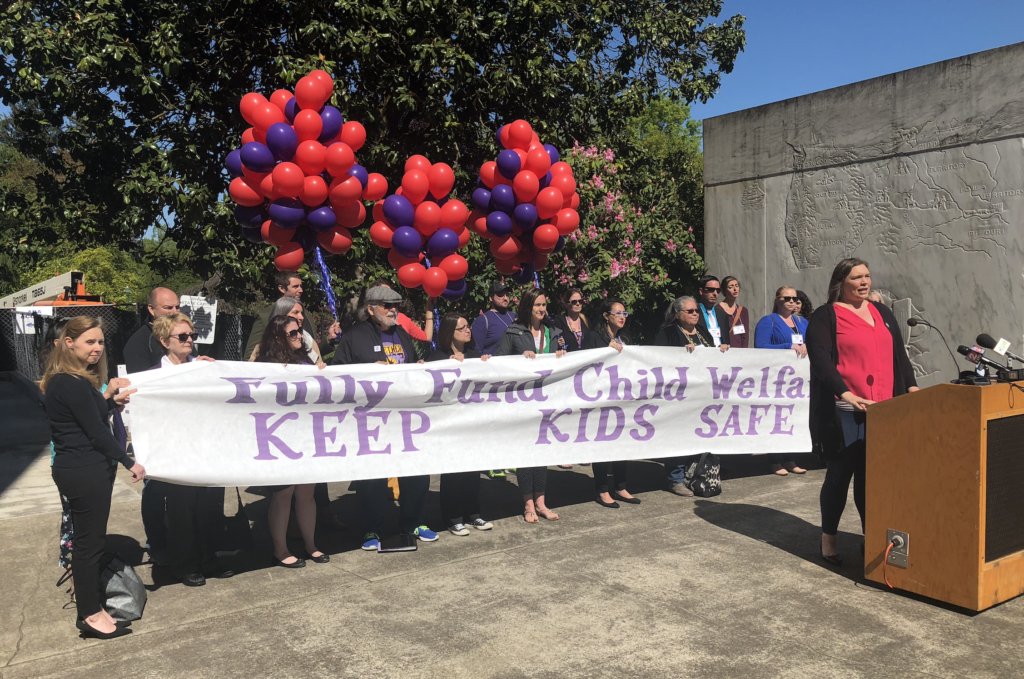Oregon’s child welfare program has been plagued by high profile problems. Everyone agrees that leadership at DHS must do more to protect the children in its care and our Union has a role to play in that process by addressing key issues like staff retention and workload.
Last week, SEIU members who work in child welfare made a big step forward, by winning an agreement with DHS to address staff retention and workload issues that are prohibiting the department from improving. There’s still a lot of work to be done, but this is a major step forward.
In 2018, the Secretary of State audited the Child Welfare program and found that staff were dealing with terrible working conditions and capacity issues. You can read the entire audit here.
It was clear back then that Child Welfare was in crisis.
- High workload – Caseloads are three to four times higher than what is optimal, contributing to staff burnout, increased turnover and difficulty recruiting new workers.
- Turnover – Caseworker turnover has been nearly one-quarter of the workers. Nearly three times the statewide average.
- Mandatory overtime – The audit found that DHS pays more than half a million dollars a month to caseworker overtime and found that the trend was increasing. What is more troubling is often the overtime is basically mandatory, and often needs to be fulfilled during nights (sometimes all night) or weekends. Numerous workers have reported regularly completing more than 100 hours of overtime in a month and its common practice to not report all hours worked.
- Poor retention and high vacancy rates – Resignation rates in Child Welfare are more than double the statewide average.
Not only were these issues identified, but they have largely remained. Because of this, Child Welfare workers have been organizing since before the 2019 Legislative Session to find solutions that will improve retention issues and help Oregon’s children and families. Here are some highlights of the work they accomplished:
- Held two lobby days to address a lack of positions and resources.
- Organized nearly 75 unity breaks in Child Welfare offices around the state.
- Circulated a petition around the state asking SEIU 503 and DAS to address these retention issues in the Collective Bargaining Process. More than 1,600 workers signed this petition.
- Wrote more than 200 letters to the Governor asking for an investment in Child Welfare staff retention.
- Sent nearly 500 emails to DHS leadership asking them to bargain to improve this situation.
- Participated in numerous interviews with media.
- Held weekly meetings with DHS leadership around system issues in the program for nearly 3 months. Including providing feedback to the Governor’s Crisis Management Team.
Last week, that process wrapped up, and child welfare workers won some key victories:
- Increased pay for work between 6 PM and 6 AM and a $500 bonus for employees to curb poor retention numbers and reward people that are sticking through this crisis.
- A process for employees to request assistance with workload issues.
- And more.
You can read about the new agreement here.
This is a big step forward for the department. Workload and retention are critical problems that we must solve in order to provide the best care possible to children in the child welfare program. SEIU 503 members are committed to being part of the solution.

